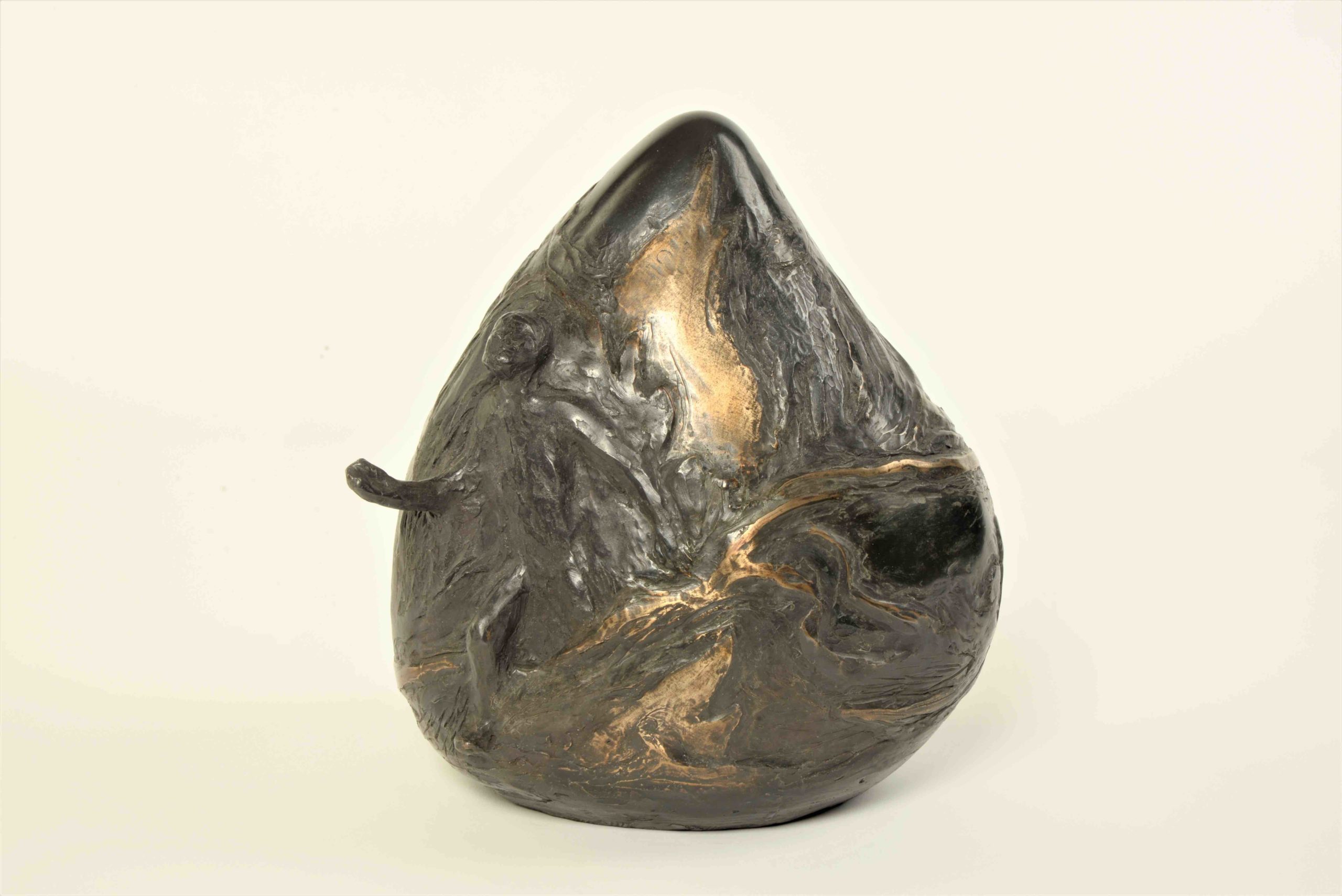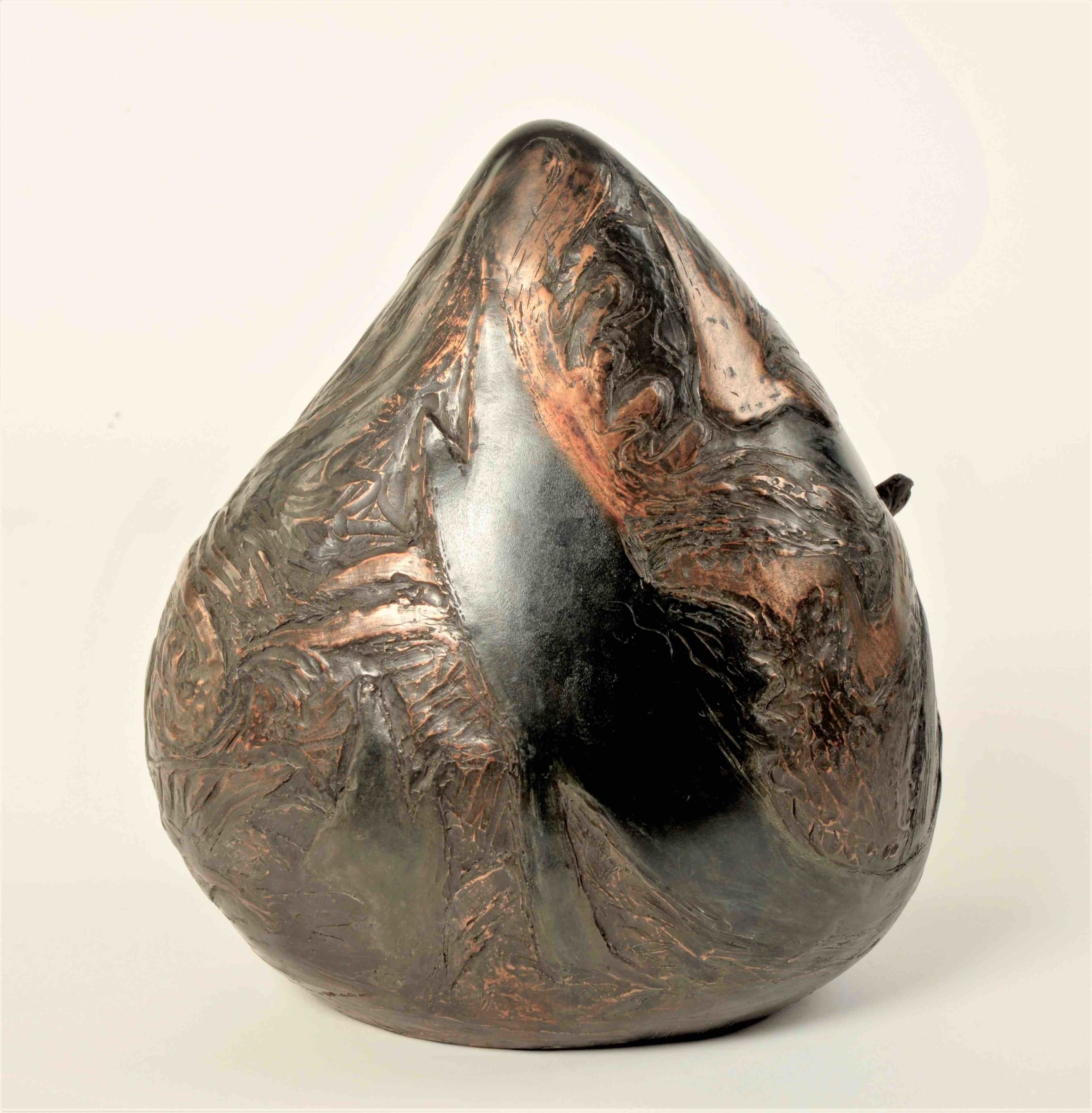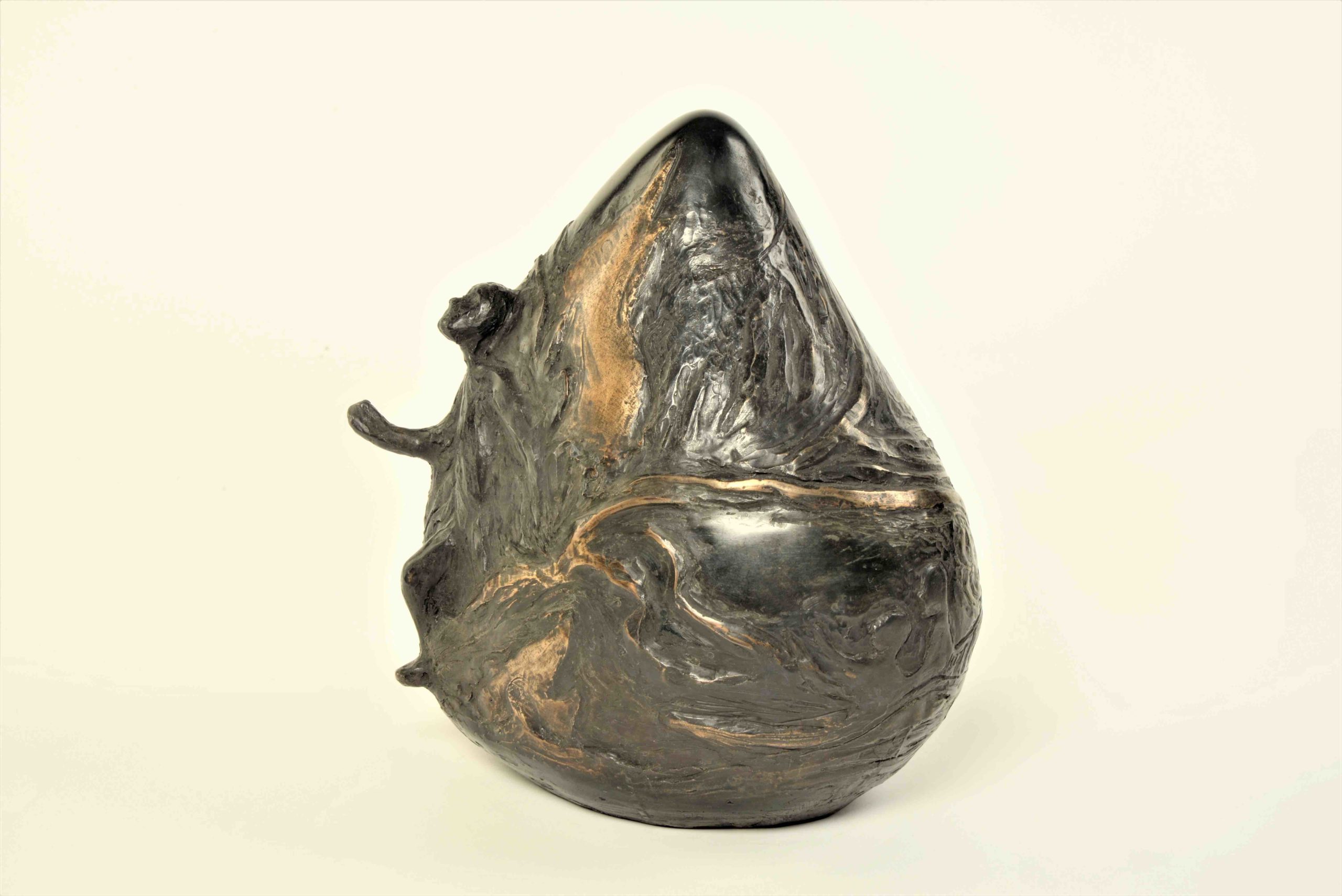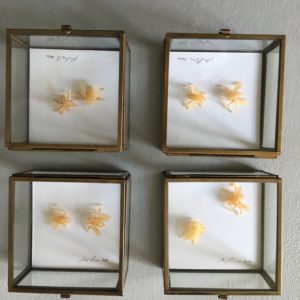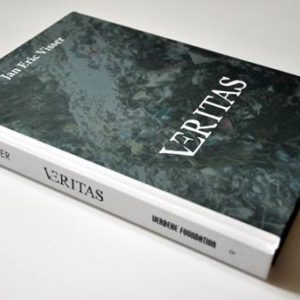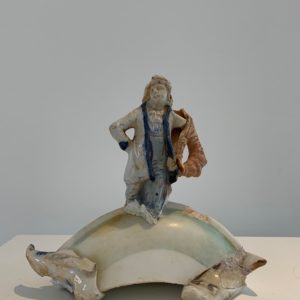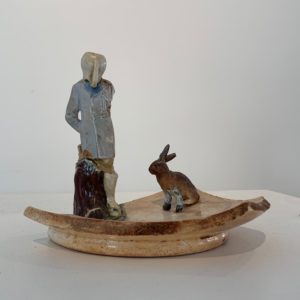£3,950.00
Isao Miura
The Departure – Haiku
Bronze; edition of 3, 2015
36 x 34 x 25 cm
Description
Isao Miura made this bronze while he was sculptor in residence at Chelsea Colege of Art in 2015. It is inspired by, and illustrates, a haiku by Matsuo Basho (1644-1694), the most famous poet of the Edo period in Japan. He is recognised as the greatest master of the haiku.
It translates as:
Yuku haru ya
tori naki uo no
me wa namida
Spring is leaving too
birds cry even the fishes’
eyes fill up with tears
As with the figure of Little Basho: Traveller in a Paper Coat, this sculpture pays tribute to Isao Miura’s love of this master of poetry. In 2016 Isao and his partner, the poet Chris Beckett, made an exhibition in Oxford to celebrate Basho. This is what they wrote:
“In spring 1689, Matsuo Basho sold his house in Edo (now Tokyo) and set off with his friend, Sora, on a long risky journey to the north of Japan, mostly on foot. He travelled light, just a paper coat, light cotton gown, his writing brush and ink. His aim was to see the great northern sights like Matsushima and Kisagata Bay which had inspired poets before him, a process the Japanese call ‘uta makura’, literally ‘poem pillow’, but more accurately translated as ‘the poem road’.
This exhibition explores the rich legacy of Basho’s work, both visually and poetically, and it documents some of Isao’s artistic and physical journey from the deep north of Japan where he grew up, ‘translating’ Basho’s text not only into English words but into sketch, to plaster, and bronze.”
In 2018, Miura together with partner, Chris Beckett and film-maker Nicolai Azariah, put on a second multi-media exhibition in London celebrating this theme.
About the artist
Isao Miura is a Zen Japanese painter and sculptor based in London. His media include oil and inks on canvas, paper and tatami (Japanese reed mats). He makes sculptures in bronze, wood, stone and installations using a variety of found or crafted objects. He trained in Japan, then at the Chelsea School of Art and the Royal College of Art in London, where he studied first under Roger Ackling and then with Ken Kiff.

